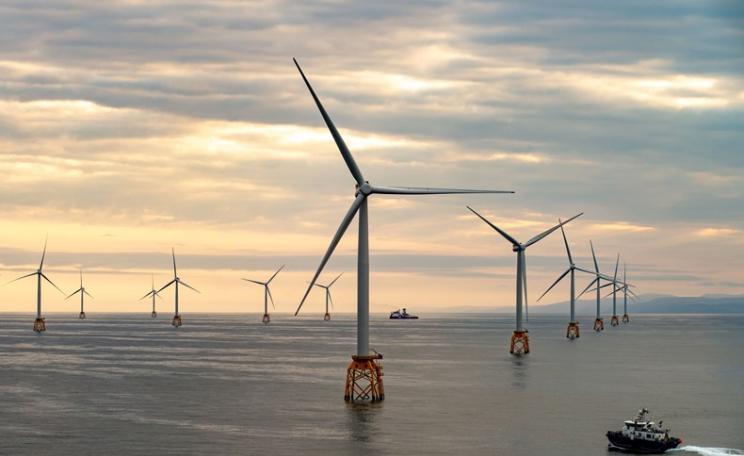The hydrogen economy is not a palette of technological options but a grey-brown oil refinery behind an eye-catching blue-green front gate. All the chatter is of the latter.
The hydrogen economy appears to enjoying its great leap forward. Assuming its construction goes to plan, a €2.5bn undersea pipeline will from 2030 convey “green hydrogen” from Spain to France. It is one element in a hydrogen infrastructure package that the European Commission announced earlier this year.
In the USA, some power stations are being upgraded to allow hydrogen to be blended with fossil gas, and the Norwegian oil company Equinor is teaming up with Thermal SSE to build a 1,800MW “blue hydrogen” power plant in Britain. China, earlier this year, unveiled a long-term hydrogen plan which includes major technological and infrastructure investments.
If the number of projects is growing at pace, one may suppose, a large supply of the resource must exist somewhere. Well, it does and it doesn’t.
Decarbonise
Hydrogen is produced in multiple ways. A colour spectrum is used to render it simple. “Grey” and “brown/black” refer to hydrogen produced from fossil gas (methane) and coal (brown or black coal) respectively—a process that, for every ton of hydrogen, emits between ten and twelve tons of carbon dioxide for grey hydrogen or eighteen to twenty for brown.
“Blue” is the same process but filed under “low carbon” because the carbon dioxide is supposed to be captured and stored underground. “Green” hydrogen is conventionally defined as generated from renewable electricity passed through water to split it into hydrogen and oxygen.
When you zoom in on hydrogen’s “colours,” however, they appear slippery. The hydrogen economy is not a palette of technological options but a grey-brown oil refinery behind an eye-catching blue-green front gate. All the chatter is of the latter.
Green and blue hydrogen yield 11 million and 320,000 Google hits respectively, as against 95,000 for grey and 49,000 for brown. The reality curves in the opposite direction: only 0.04 per cent of hydrogen is green, and blue hydrogen is also less than one per cent. At least 96 per cent is grey or brown, most of which is used in oil refineries and for manufacturing ammonia and methanol.
The hydrogen economy is not a palette of technological options but a grey-brown oil refinery behind an eye-catching blue-green front gate. All the chatter is of the latter.
It’s an enormous industry, responsible for emitting more carbon dioxide than all of Britain’s and France’s emissions combined. The test of any government or corporate hydrogen agenda, then, is the nature—or even the existence—of its plans to decarbonise the 96 per cent. In some cases this is beginning to happen. But if the focus is on producing more ‘blue’ and more ‘green’ for other purposes, something is amiss.
Failures
When you look closely at green hydrogen, some of it resolves into shades of grey. It’s not simply that its production is extremely energy-intensive or that in its double transformation—from electricity to hydrogen and thence to its final usage—so much energy is wasted.
It is partly that, if combusted, it emits nitrogen oxides, and also that, if scaled up to play a significant economic role by 2050 (as in recent projections by the International Energy Agency), its freshwater requirements will exceed one quarter of today’s global annual consumption, causing water stress in some regions.
Above all, green hydrogen is meaningfully green only if the renewable energy that generates it cannot be fed into the grid to replace power from gas or coal plants.
A similar but much more harmful trick of the light occurs with blue hydrogen. Look closely and you see that in reality it’s either chequered blue/grey or even blank, a mere fiction.
For hydrogen to be true blue, the emissions must be captured and securely stored. In theory, CCS is workable but nearly all plants use the captured carbon to pump more oil and many have been shut down as failures.
Costs
Only a handful operate to store carbon rather than using it to produce oil, and even here it is highly energy intensive and captures only a part of the carbon dioxide. It can also leak once in storage.
Moreover, blue hydrogen’s main feedstock is methane, a powerful greenhouse gas that is notorious for leaking: at the drilling wells and from the pipelines. Recent research suggests that blue hydrogen is even worse for the climate than fossil gas.
Blue hydrogen is still in its infancy and we don’t yet know whether most of the CCS costs will be loaded onto taxpayers, as the gas companies demand.
Price projections should be treated with the utmost scepticism. One boosterish paper cites blue hydrogen from Alberta (Canada) at $1.50 to $2.0 per kg. It adds that blue hydrogen production will help Canada achieve its decarbonisation goals.
In fact, research at Shell’s CCS plant in Alberta discovered that it emits more carbon than it captures. For the foreseeable future, this is not a “low carbon” product in any sense of the term. It is a hypothetical solution the costs of which remain unknown, as the development of projects has been slow and costly with few realised, while future operating costs are also unclear.
Electrolysers
Given the question marks that surround blue hydrogen, it’s widely hoped that a silver lining of today’s high gas prices will be that green hydrogen becomes cost competitive.
In terms of inputs, the green-blue price difference boils down to the cost of electricity versus fossil gas. With the global energy crisis exacerbated by Russia’s war on Ukraine, many are asking: will high gas prices favour green hydrogen? Spoiler alert: probably not.
In the EU, as in many economies, electricity pricing is based on the principle of marginal costs, and that usually means the price of power from fossil gas plants. When it is high, renewable electricity generators will seek to sell to the grid. In this way, blue and green prices are largely interwoven in the current market setup; their inputs move in sync.
Of course, there are geographical and temporal differences. During sunny spells, electricity prices may collapse as solar PV-based generation picks up.
This unlinks electricity and natural gas prices, but only momentarily, often only for a few hours—not enough to justify investment in electrolysers to produce green hydrogen. On the whole, the price gap between blue and green will remain fairly narrow until electricity markets are fundamentally restructured.
Transition
There’s worse. The high price of hydrocarbons has turbocharged the industry’s expansion. The US government is exhorting oil and fracking firms to ‘drill baby drill.’ Britain’s government has issued over one hundred additional licenses to drill. Colossal new fossil fuel investments have been announced across the Middle East and Africa.
All this will have long-term ramifications. First, in a few years when the new production comes on stream, and particularly if the current growth slowdown substantially depresses demand, gas and oil will again become cheaper—until the next price spike prompts new rounds of investment, and the infernal cycle continues.
Second, the owners of the new-drilled wells and other infrastructure will fight tooth and nail to defend those assets, and to stall the decarbonisation agenda. The peculiarity of hydrogen is that it is a means to both the stalling and the decarbonisation.
The latter can be simply stated. Green hydrogen will be important to the decarbonisation of certain sectors such as steel, and ammonia for fertilisers, and possibly shipping and trucking.
The role of hydrogen in stalling the transition is complex but no less important. It begins with the recognition that the fossil fuel corporations are rebranding themselves as agents of “carbon management.”
Ramping
The goals are to prevent their assets from getting stranded by repurposing them, above all by marketing grey and blue hydrogen as “bridge” fuels; to lock in hydrocarbon production for decades to come; and to defray the costs onto taxpayers.
For this, hydrogen offers the perfect vehicle, in view of its confusion of shades and colours. Fossil fuel interests use it to counter opposition to new investments in fossil gas through an aggressive marketing and lobbying campaign that presents a largely fictional substance, blue hydrogen, as a low-carbon “bridge” to an unspecified future genuinely-green transition.
Other sectors have joined the oil-led coalition. As the engineer Tom Baxter observes, it is seen by gas network operators and boiler manufacturers as their survival route.
Likewise, power utility companies are keen, as hydrogen’s inefficiencies mean they’ll sell more power. Relatively conservative trade unions, such as Britain’s GMB (General, Municipal, Boilermakers), are onboard too.
To tackle this stalling operation, a strong role for public policy is indispensable. Governments will need to regulate or tax carbon out of the market while simultaneously ramping up renewables.
Malign
Fiscal and subsidy schemes need to pivot from supporting fossil fuels to supporting renewables. The approach to electricity pricing must shift, to decouple the prices of electricity and fossil gas.
Instead of the marginal pricing system, it requires incentivising rewards for generators according to their average costs plus a slight surplus, either through a robustly regulated market system or by nationalising the energy companies and setting prices and production.
Such interventions would give green hydrogen a competitive advantage, one that can be furthered by other subsidies, such as tax credits on the model of the US Inflation Reduction Act. Above all, energy demand needs to be scaled down. The lower the demand, the less the upward pressure on price.
In any future energy system, hydrogen will have a role. But its expansion needs to be carefully designed, to prevent the promise of green hydrogen being mis-used, in opening the back door to its ecologically malign blue and grey cousins.
These Authors
John Szabo is a Fellow at the Institute of World Economics, Centre for Economic and Regional Studies as well as an Assistant Lecturer at the Department of Eötvös Loránd University International Relations and European Studies, Eötvös Loránd University. His research focuses on the energy-society nexus, especially in the context of the energy transition.
Gareth Dale teaches politics at Brunel University, and many of his articles appear on its website. He tweets at @Gareth_Dale. This article first appeared, in edited form, at The Conversation.







